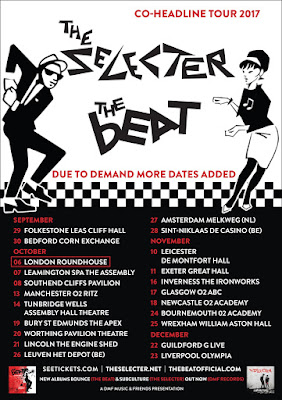Review - A Nostalgic Week of Pop Music in Oran Mor Glasgow
Charlotte Church's Late Night Pop Dungeon - Oran Mor, 14th April 2017
Lloyd Cole's Classic Songbook (1983 - 1996) - Oran Mor, 11th April 2017
A co-incidental collision of nostalgic pop acts were on show in Oran Mor, Glasgow this week giving completely contrasting performances. As part of a tour promoting a new box set collection (Lloyd Cole in New York, Collected Recordings 1988 - 1996) Lloyd Cole pitched up for three nights in Glasgow. Coming back to the town he first arrived in as a student, and where he formed Lloyd Cole and the Commotions, his only nostalgia for the place was gratitude that the University Cafe still exists. A seated audience and an acoustic set, first hour alone, second hour accompanied by his son on a second acoustic guitar, it was never going to be a riotous affair. At the end of a six month tour, where the box set only materialised in the final weeks, there was a certain weariness about his usual hangdog demeanour. With almost 30 songs in the show, there were always going to be moments when only the superfans were singing along, but his songs were always lyrically interesting and his singing as clear as I remember from my days listening to Rattlesnakes. Only once did he forewarn us that his voice wasn't going to reach its former heights.
With the hits spread out through the evening we got Rattlesnakes and Jennifer She Said in early and later got onto Cut Me Down, Perfect Skin, Brand New Friend and Lost Weekend. The studenty literary references in the songs and tales of one night stands in the songs maybe don't fit so comfortably a man in his 50s singing with backing from his son, but the big songs have stood the test of time. They are his songs, and I would have enjoyed seeing if re-visiting them now brought him back to the younger man that wrote them, what was he thinking/ doing/ dreaming? But there was none of that, the songs were slipped on like a comfortable coat, then discarded onto the floor when finished with a brief "thank you" to the polite applause. His musical inspirations leaked into the guitar outros of some songs with brief chords from Bruce Springsteen, Prince and The Beatles thrown in there somewhere. With aspirations to be a mid-Atlantic Leonard Cohen I like the Americana in many of Lloyd Cole's songs, even if it feels artificial. None of the songs touched me in any emotionally way, but there were plenty to hum along to and tap my feet (clapping along was banned). A droll evening rather than one filled with clownish whimsy.
Clownish whimsy was the tone Charlotte Church and her Late Night Pop Dungeon were aiming at from the off. The venue was packed with a very mixed crowd as she came on stage, like her band, all spangley hot pants, wigs, glitter and foil. Keyboards, drums, guitar, bass and five backing singers made for a cramped stage as she battered through a 90 minute medley of songs. If there was any musical theme it was "anything goes". A song you sort of recognised would suddenly morph into something totally different. A song would start as a disco hit and end as Radiohead's Paranoid Android. Nelly's song Hot In Here, ended as Talking Head's Burning Down The House. We went everywhere, from soul and funk to rock music and Fleetwood Mac. Edwin Starr's "War" had a lively crowd pogoing away. Only nearer the end when she went for more mainstream songs could the crowd manage to start singing along, desperate to join in by that point, then she changed direction again with a melodious rendition of John Williams's theme from ET. Charlotte Church certainly has catholic tastes when it comes to pop music.
































